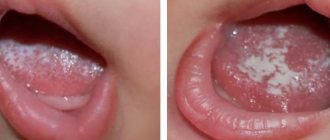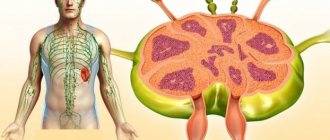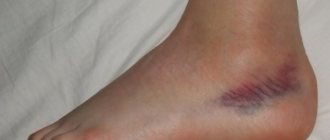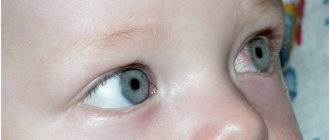Every parent has encountered such an unpleasant phenomenon as thrush in a child’s mouth at least once in their life. Most often, white dots and plaque appear on the tongue for no apparent reason. The baby begins to worry, it is unpleasant for him to eat and swallow. Where thrush comes from and how to treat it, says the famous children's doctor and author of books and articles on children's health for adults, Evgeniy Komarovsky.
There is no medical diagnosis of thrush as such. There is a certain type of stomatitis that is caused by yeast-like fungi of the genus Candida. At least a dozen candida are known that can cause inflammation of the oral mucosa. They live everywhere - in the environment, in the mouth, in the intestines, in the vagina of girls.
Candida are permanent inhabitants of the human body, but they go into “conflict” only when something changes in their living conditions - humidity, body temperature.
Thus, while the child is healthy, the fungi behave quite peacefully, but as soon as he gets sick, the immune system begins to weaken, candida activates and becomes aggressive. This is how the disease begins, popularly called thrush.
The name is very accurate, since the white sores visually closely resemble curdled milk particles.
In the mouth, thrush develops when saliva loses its bactericidal properties.
It’s no secret, says Komarovsky, that saliva is quite active against a wide variety of microorganisms, and if its biochemical parameters are normal, it can easily cope with candida. But if saliva becomes thicker, or it is not produced enough, then stomatitis will not have to wait long.
In newborns, thrush in the mouth is often a consequence of passage through the mother's birth canal.
There, colonies of Candida of different species are a completely normal phenomenon, but a child’s saliva immediately after birth does not yet have strong bactericidal properties, and the immune defense is still imperfect, local immunity is not sufficiently developed. As a result, the baby's mouth is covered with white spots, it hurts him to suck, and he gets worried.
Typically, stomatitis caused by candida is not particularly dangerous.
But in some cases, with severe and extensive damage, inflammation can spread to the larynx, and this is fraught with sore throat.
Saliva, according to Evgeniy Komarovsky, begins to lose its bactericidal protective properties when it dries out. This can happen for a number of reasons:
- The baby is in a room that is too hot and dry.
- Mom and dad rarely take the baby out for a walk.
- The baby screams often and for a long time, while he inhales mainly through his mouth, which is why the saliva dries up.
- The child has a runny nose, nasal breathing is difficult, he has to breathe
Candida is very contagious, and therefore there may be other causes of stomatitis.
A one-month-old baby can “catch” an infection from a pacifier or dishes held by a person suffering from thrush. Even a mother can become this person. It can also be caused by being in close proximity to a young cat or puppy (parents love to photograph babies this way). Even frequent regurgitation can lead to stomatitis if parents do not remove milk from the mouth.
Children under one year old often begin to suffer from oral thrush when they understand how to put this or that object into their mouth and actively practice it. And babies older than one year can get sick from eating unwashed vegetables and fruits and improperly cooked meat.
Thrush requires special attention when ulcerative lesions are observed not only on the child’s tongue, but also on the inner surface of the cheeks.
The first case cannot be considered a disease at all, says Evgeny Komarovsky, since for a child who is breastfed or fed with adapted milk formulas, this is a variant of the norm, and nothing needs to be done about this plaque.
If white ulcers are found on the cheeks, we can talk about stomatitis as such and begin therapeutic actions.
First of all, Evgeniy Komarovsky proposes to return the necessary protective properties to saliva so that it can cope with the raging fungus of the genus Candida. To do this, you should buy a room thermometer, hang it in the children's room and make sure that at any time of the year or day, the air temperature does not exceed 18-20 degrees Celsius.
The second necessary purchase is a humidifier with a hygrometer. Using a humidifier, you need to increase the relative humidity in the child's room. A hygrometer will allow you to monitor its level. The humidity at which saliva does not dry out and does not lose its bactericidal properties is 50-70%.
The child should walk a lot in the fresh air.
And while he is outside, the room must be ventilated and wet cleaned at least once a day. There is no need to add detergents containing chlorine to the water. Dust should definitely be removed from the nursery every day, and all “dust collectors”, which are large soft toys and books, should be removed altogether from the room where a small child sleeps and spends a lot of time.
The child must be given enough water, because a lack of fluid in the body also causes saliva to dry out. If the baby drinks milk, you should give him a few sips of water so that there is no milk left in the mouth and does not create a favorable environment for the proliferation of yeast-like fungi.
The white sores themselves on the baby’s gums and cheeks should be treated with a two percent soda solution. It’s easy to prepare it at home: take 2 grams of baking soda per 98 ml of boiled water.
Electronic kitchen scales are found in almost every home today, and calculating the required amount of a substance is not difficult. If there are no scales, then take soda on the tip of a knife, in water - a little less than half a glass.
Mom moistens her own finger, previously wrapped in clean gauze or a bandage, with a soda solution, and gently treats mouth ulcers with this finger. For an older child who already understands how to rinse and spit out the liquid, you can simply give this mouthwash solution.
In case of severe candidiasis, you can lubricate the sores with Cholisal gel - it will additionally have an analgesic effect.
- You cannot burn white spots in your mouth with iodine or brilliant green, as well as alcohol and alcohol solutions.
- You should not give antibiotics to a child with oral thrush, or apply antibiotics directly to oral ulcers.
- Do not remove plaque from the cheeks and tongue mechanically or manually.
- You cannot take a child to kindergarten with signs of stomatitis, because in one day in the group he will infect up to 70-80% of his peers with candida.
During treatment, you do not need to give your child sweet foods; Candida loves sweets. A nursing mother should exclude sweets from her diet.
You will learn more about fungal infections in the mouth in children from the following video.
A few words about thrush
The causative agent of the disease is a fungus of the genus Candida, which is why the disease is also called candidal stomatitis. The fungus is considered part of the human microflora, and is usually localized on the mucous membranes of the mouth, genitals, and gastrointestinal tract. As soon as the yeast-like substance becomes pathogenic, inflammation of the oral mucosa occurs. The appearance of harmful bacteria is favored by:
- Weakened immune system;
- Long-term use of potent medications;
- Unbalanced diet.
Weakened immune system
Long-term use of potent drugs
Unbalanced diet
The disease occurs in the presence of the above factors, since “harmful” bacteria predominate over beneficial ones. Candidiasis appears mainly in the mouth of children - babies put everything in their mouths, “exchanging” necessary and harmful microbes and bacteria. Due to weak immunity, fungal infection occurs when children come into contact with each other. Moreover, the younger the child, the weaker the immune system, so the risk of infection becomes higher. Parents begin to think about how to treat thrush in their child’s mouth.
Causes of the disease
As a rule, the cause is a sharp decrease in immunity. Immunodeficiency occurs more often in young children or pregnant women. But we should not forget that the lack of immunity is not the only reason, but the most common and primary one. Among all others, the following can be identified:
- The occurrence of a disease that requires long-term use of antibiotics. In this case, the reason may not be their incorrect intake, but rather the incorrect dosage.
- Tongue candidiasis can occur in cancer patients who have been prescribed and received radiation therapy.
- Quite often there are cases where candidiasis in the oral cavity occurs due to the constant use of oral medications in order to provide contraception.
- Wounds and injuries on the surface of the tongue are the most important route for infectious fungi, including candida, to enter, which causes candidiasis on the tongue in adults.
- People who wear dentures should carefully monitor their hygiene, since improper treatment is a consequence of infectious fungus entering the oral cavity.
- Smoking can also cause thrush.
Causes of fungal infection
The root cause of thrush is considered to be infection from the mother - infection of the baby’s mucous membranes during passage through the birth canal.
That is why before planning pregnancy it is recommended to treat inflammatory and fungal diseases. If thrush appears in a pregnant woman, it is advisable to be completely cured before giving birth to avoid infection of the newborn.
In addition, there are a number of factors that contribute to fungal infection:
- Viral diseases;
- Neglect of basic hygiene rules (dirty toys, dishes, bottles, pacifiers);
- Bedtime pacifier;
- Disorders of the intestines;
- Allergic dermatosis;
- The child constantly burps - a favorable environment appears in the mouth for the proliferation of pathogenic microbes;
- Prematurity of the baby;
- Lack of vitamins and microelements.
Viral diseases
Bedtime pacifier Neglect of basic hygiene rules
Intestinal disorders Allergic dermatosis
The baby constantly spits up
Prematurity of the baby
Lack of vitamins and microelements
Formula-fed babies are more often susceptible to candidiasis than infants - the milk of a nursing mother stimulates the little person’s immune defense.
Thrush is transmitted in two ways:
- Household - through personal hygiene items (toothbrush, dishes). Often the mother neglects these rules: licks the baby’s nipples and spoons, which leads to illness;
- Airborne - for example, storing or washing raw meat near other foods, which allows the fungus to spread through the air.
Particular attention should be paid to a child over 1 year of age if he has not taken antibiotics and has not been in close contact with other children. Presumably, the son or daughter is suffering from an exacerbation of a chronic disease and a thorough diagnosis of the pathology is needed. The body's immune defense may decrease due to a lack of vitamins and microelements, lack of sleep, frequent colds, exacerbation of endocrine diseases or other serious disorders (HIV, leukemia).
If we are talking about an older child, then thrush can appear even in a teenager - the pathogenic process is facilitated by hormonal changes in the body, which is why immunity is often reduced and underlying diseases appear.
Preventive measures
Timely observance of basic rules will significantly reduce the risk of infection of the baby:
- Don't kiss your baby on the lips;
- Carefully handle and wash all toys and other objects that the child may put in his mouth;
- To wash nipples and bottles, use boiling water and a soda solution;
- Wash your hands before holding your baby;
- Avoid taking antibiotics unless necessary, and during the course of antibiotic therapy, supplement the course with probiotics (nursing mothers should not be treated with antibacterial drugs either);
- Maintain good oral hygiene;
- Maintain breastfeeding for as long as possible;
- Treat your child for all diseases in a timely manner;
- Give vitamins according to age.
Infantile thrush can be treated mostly without problems if you start acting quickly and logically. If it is not possible to immediately visit a pediatrician or call him at home, do not despair. Write to our consultant right now, who will tell you how to act and not cause an infection, so that your children’s mouths are always healthy, and their faces are constantly adorned with spontaneous smiles.
Symptoms of thrush
The first symptoms of the disease are redness of the oral mucosa and swelling of the palate, tongue, inner surface of the cheeks, and gums. After some time, a white, grayish or yellow coating appears, which is often confused with milk residues on the tongue. However, plaque cannot be removed from the affected area, and if it is possible, then reddish covers with small erosive formations are visible underneath.
Soreness and burning appear in the mouth, and it is painful for children to swallow. Particular discomfort prevails when hot, cold, hard, spicy foods come into contact with the mucous membrane, so it often happens that a child refuses to eat, and babies are prone to frequent regurgitation. Stress, discomfort and pain lead to eating disorders, as a result of which weight is gained slowly or completely lost.
After the oral cavity, thrush spreads to the pharynx: children have difficulty swallowing, and there is a sensation of a foreign body in the throat.
If the baby refuses the breast or other food, pushes out the pacifier with his tongue, or shows anxiety by crying and feeling unwell, carefully examine the baby’s mouth. You may notice cheesy specks of white and grayish hue.
Symptoms
It is important to recognize the disease in time, determine the causes of its appearance, and generally notice it in the mouth, especially in young children, because they cannot tell about any uncomfortable conditions. Rarely, a healthy person may show signs that he has a thrush on his tongue.
Tongue candidiasis has some peculiarities in its manifestation. For example, plaque never immediately appears on the tongue and does not have a bright white color. This pearlescent coating covers the inside of the cheeks, gums, palate, etc. (see photo below). As it develops, plaque also appears on the edges of the lips.
Severity of thrush
Doctors divide candidal stomatitis into several forms. Depending on the stage of the process, the doctor will advise how to treat oral thrush in children.
Easy stage
If you look into the baby's mouth, you will notice red spots on the inner surface of the cheeks and tongue, which are soon covered with a curd-like film. The plaque can be removed with a cotton swab or spatula. The child does not feel symptoms of the disease, and there is no sour smell from the mouth. To recover, it is enough to treat the oral cavity with an antiseptic, and then carry out prophylaxis.
Diagnostics
Before treating oral thrush in children, you should make sure the diagnosis is correct. In addition to visual diagnostics, laboratory tests are required, which include:
- Bacteriological culture of the oral cavity - establishing the fungal type, determining sensitivity to antifungal drugs;
- Visual examination of the larynx with a laryngoscope to determine fungal infection of the lower respiratory tract;
- Blood sugar test - diagnosis of diabetes mellitus;
- Complete blood count - look at leukocyte counts and ESR;
- Blood from a vein for TORCH infections (herpes, rubella, HIV, syphilis and others) - assessment of the state of the immune system.
Bacteriological culture of the oral cavity Visual examination of the larynx with a laryngoscope
Blood sugar test
Blood from a vein on TORCH
It is better to prevent an acute condition in time and cure the disease at an early stage than to spend a long and painful time treating the chronic type of thrush.
How to treat a baby?
Do not give in to panic if your child has stains in his mouth. This type of thrush responds well to treatment. The main condition is the systematicity of procedures. First, you should call a pediatrician at home (for infants) or visit his office (for older children). The approach to treatment depends on the form of thrush.
| Light form | Medium form | Severe form |
| If diagnosed in a timely manner, you can get rid of such thrush within a week using external remedies. | It is treated comprehensively, using local treatment in the mouth and taking antifungal medications orally (for at least 2 weeks). | A treatment course of two weeks or more with local and systemic agents after determining the sensitivity of the fungus to the active ingredients of the drugs. |
Drug therapy
Medicines for children should always be selected with extreme caution. They must meet the following requirements:
- Minimal toxicity: when candida dies, it releases many toxins, so the preparations should be mild, and their benefit should be significantly higher than the possible harm.
- Convenient use: parents, together with the pediatrician, should consider which form of medication will be the most convenient (do not forget about the individual characteristics of the child), so that the entire dose of the medicine gets into the mouth, and the baby is not injured during the procedure.
- Quick result: it is undesirable to treat a small patient for a long time, and the effect must be absolute so that the baby does not have to be treated again.
Among the drugs that children are allowed to take are Nystatin, Candide, Fluconazole and Levorin. They belong to the group of antifungal antibiotics. You need to understand that you cannot make a decision about their use on your own. The advisability of drug treatment for oral thrush in babies is determined only by a doctor. He will also tell you exactly how to use the medications.
Traditional treatment
What to do if the disease, for example, was detected over the weekend? Before consulting a pediatrician, you should use basic folk remedies. They, of course, are not a panacea, but they help cope with the earliest manifestations of thrush, stop the development of infection and bring relief to the baby.
Soda solution against candida
It is perhaps difficult to find a more popular folk remedy. They treat not only children, but also adults. The principle of operation itself is quite simple: the alkaline environment makes the environment uncomfortable for fungal agents. 2% solution (a teaspoon is dissolved in a glass of boiled water at a comfortable temperature). They lubricate the plaque localization areas by wrapping a piece of clean gauze around the index finger. Older children can rinse their mouths with this solution. Newborns' mouths are treated 3-4 times a day.
Herbal decoctions
Tampons soaked in healing potions are used to lubricate the infected areas. To prepare decoctions, children take:
- Chamomile;
- Oak bark;
- Alternately;
- Calendula.
When using herbs and plants separately, you should be careful: despite their naturalness, they can provoke the development of allergies. Treatment is carried out 5-6 times a day.
Honey
Its antiseptic and antifungal properties have long been recognized, but you need to be careful with children, since honey also acts as a strong allergen. They lubricate plaque in the mouth to eliminate inflammation and pain. It is better to lubricate with honey after treating the mouth with a herbal decoction.
Fruit and vegetable juices
Rubbing with juices carries a hidden danger: in infants it can cause severe allergies. Some of them (for example, carrot) are believed to help treat thrush. In practice, this effect is highly questionable.
Treatment of thrush in children of different ages
Young patients deserve special treatment in such delicate matters as the treatment of thrush, so several age groups are distinguished, each of which requires a specific approach.
- Infants
They try to treat very tiny children with a regular soda solution, so as not to harm the developing body. If you repeat the procedure often enough throughout the day and do not make the disease worse, the thrush will go away. Breastfeeding should not be stopped, even if the mother’s candidal disease has spread to the nipple area. In this case, mother's milk becomes the child's natural protection.
In extreme cases, medications are still prescribed. Usually these are Candida drops, but sometimes, if the risk of complications is high, more potent drugs are used with the minimum dosage established by the pediatrician.
- Children over 6 months
Most antimycotic drugs can be taken from six months of age. Until this period, you should try to get by with local traditional medicine.
Such drugs act by destroying the cell membranes of the pathogen, as a result of which the vital activity of candida becomes impossible and they die. It is important not to stop treatment after symptoms disappear, as this does not indicate recovery. You need to complete the entire course, and after finishing it, take tests again to avoid relapse.
- Children after one year
Older babies can take many popular antifungal medications, including:
- Miramistin (solution or ointment for treating the oral cavity);
- Nystatin (tablets or ointment);
- Candide (solution);
- Diflucan (tablets);
- Clotrimazole (ointment, cream, solution, tablets).
It is not enough to focus only on medications; restoring the immune system is considered very important, since thrush in the mouth in older children always indicates a decrease in protective functions.
Conditions for a successful course
- If a mother has a thrush (on her nipples or in her vagina), she should treat the infection immediately;
- Pay attention to the state of the immune system, visit an immunologist if necessary;
- Eliminate sweets from your diet temporarily;
- Keep your teeth and braces (if you have them) clean;
- Nursing mothers should clean their nipples and change breast pads before each feeding;
- When the baby has eaten, the remaining food is removed, and older children rinse their mouths.
Komarovsky's advice
A well-known modern pediatrician has his own views on childhood thrush. Basically, his advice is progressive and helps make treatment more effective. So, Komarovsky states:
- Thrush in babies develops in the mouth when saliva, which has natural protective properties, dries out. This may be a consequence of rare exposure to fresh air, frequent screams, breathing problems;
- The presence of a white coating only on the tongue is the norm. The time for parents to fuss is when it spreads to the inner surface of small cheeks;
- The main thing in treatment is to restore the bactericidal properties of saliva;
- For a speedy recovery, you need to constantly ventilate the room and walk a lot in the air with your baby;
- Each meal is washed down with a couple of teaspoons of water to prevent food from accumulating in the mouth;
- The most effective treatment is baking soda.
Treatment of oral thrush in a child
After making a diagnosis, an otolaryngologist or pediatrician decides how to treat oral thrush in children. First of all, during treatment it is important to prevent the spread of the infectious process and prevent re-infection. Treatment of candidiasis requires an integrated approach and the patience of parents.
Treatment of oral candidiasis in infants
The difficulty in treating infants is that the baby does not yet know how to speak and cannot describe his symptoms. Therefore, mothers of newborns and infants need to be extremely attentive to the child’s health condition, and if questionable symptoms appear, contact their local pediatrician.
If the cause of candidiasis is frequent regurgitation, in addition to treating the disease, it is necessary to prevent the physiological process. It is important to attach the baby correctly to the breast, try to give the bottle and pacifier so that no air gets into the baby’s stomach while latching on the pacifier or breast. You need to adhere to the correct feeding technique, and after eating, carry the baby in a “column” to release excess air from the stomach.
Pediatricians assure that a mild stage of the disease does not need to be treated—it is enough to just keep the living space clean, ventilate the room as often as possible, and prevent the development of mold in the apartment.
Therefore, the permissible air temperature in the room should not exceed 19 degrees, and the relative air humidity should fluctuate between 40-60%. To prevent re-infection in the future, it is important to boil all jars, bottles, and nipples, as well as wash your breasts with laundry soap before feeding and treat your nipples with an antiseptic. A nursing mother and a baby over 1 year old should give up sweets, as sweet treats provoke the growth of fungi.
According to the famous doctor Komarovsky, the growth of fungi will stop if the baby has normal nasal breathing. Therefore, parents should moisturize the nasal mucosa to avoid microcracks and the proliferation of pathogenic microorganisms. By maintaining the mucous membranes in normal condition, fungal progression will stop and thrush will go away.
Methods of therapy
To prevent such severe consequences of oral thrush in newborns, it is necessary to seek medical help at the first symptoms of the disease. Complex therapy of the disease is based on external local treatment of lesions with anti-candidiasis, alkalizing, and disinfectant preparations. All manipulations in the child’s mouth should be carried out with extreme caution - without pressure, gently and gently.
If a severe form of pathology develops, intravenous administration of antimycotic medications may be prescribed. Adequate treatment gives results within 3-5 days after the start of the course. Subject to undergoing the full range of therapy prescribed by the doctor, as well as observing hygiene rules and carefully monitoring the baby’s condition, you can protect the child from the risk of re-infection and the development of dangerous complications.
Traditional methods
It is not recommended to treat candidal stomatitis in a child with medications, but alternative medicine has proven itself to be excellent. The remedies of traditional healers do not pose a danger to a small child, do not cause allergic reactions, and successfully cope with the disease.
When using traditional medicine, consultation with your doctor regarding treatment is required.
Useful recipes for curing oral candidiasis:
- Dilute aloe juice with water at room temperature 1:1, soak a cotton swab and treat your mouth;
- An aqueous solution of soda and hydrogen peroxide are necessary for treating pacifiers or nipples;
- Potassium permanganate (potassium permanganate) is diluted to a light pink color and treats the mucous membranes. Treatment lasts no more than 1 week;
- Liquid honey is used only if the child is not allergic. Take 20 ml of buckwheat or linden honey and dilute it in 100 ml of water. We dip the pacifier in honey water, but do not treat the baby's mouth.
Prevention measures
To prevent thrush from recurring, it is necessary to follow preventive measures:
- Sterilize baby’s personal hygiene products;
- Care and disinfection of children's toys;
- Prevention of dysbacteriosis during treatment with antibiotics;
- Cure from thrush before childbirth;
- Close contact with other children suffering from diseases of the oral cavity and nail fungus is undesirable;
- Timely complementary feeding containing vegetables, fruits, lactic acid products;
- Caring for your baby's teeth, starting with the first tooth.
Sterilize baby personal hygiene products
Care and disinfection of children's toys
Prevention of dysbiosis during antibiotic treatment
Child hygiene
Cure for thrush before childbirth
Close contact with other children is not advisable
Timely complementary feeding containing vegetables
Caring for your baby's teeth, starting with the first tooth











